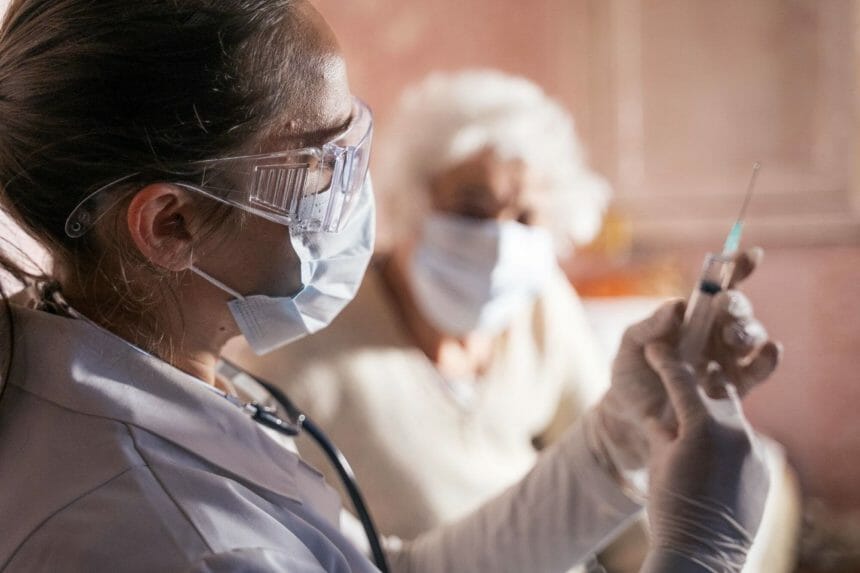
With the Centers for Disease Control and Prevention’s advisory committee set to vote today on the first priority groups to receive a COVID-19 vaccine, major aging services organizations are calling on the federal government and states to not leave older adults and their caregivers behind again.
The American Health Care Association / National Center for Assisted Living, the American Seniors Housing Association, Argentum and LeadingAge released a joint statement emphasizing the need to keep long-term care residents and staff on the top of the COVID-19 vaccine priority list.
“In the early months, essential resources such as personal protective equipment, testing and staffing support were directed toward hospitals and other healthcare sectors, leaving nursing homes, assisted living and senior living communities and other long-term care providers pleading for help,” the statement read. “Government reports correctly identified all long-term care residents and staff for priority distribution of COVID-19 vaccines. It is crucial that policymakers at all levels maintain that position as these products come online and are delivered across the country.”
The CDC’s Advisory Committee for Immunization Practices will meet this afternoon to vote on recommendations for vaccine allocation priorities. The committee met last Monday to weigh long-term care residents’ place in the priority line for the initial supply of COVID-19 vaccine.
Although healthcare workers remain the top recommended priority group, there was debate about moving non-healthcare essential workers ahead of older adults and people with high-risk medical conditions. The idea is to protect people disproportionately affected by COVID-19, as outlined in ACIP’s guiding ethics for vaccine allocation.
Although long-term care facility residents account for less than 1% of the U.S. population, residents and staff account for 6% of coronavirus cases and 39% of deaths, according to the CDC.
At issue are the large numbers of individuals in the established priority groups — 21 million estimated healthcare workers, 87 million essential workers, 100 million adults with high-risk medical conditions, and about 53 million adults aged 65 and older, including about 3 million older adults living in long-term care facilities.
During a U.S. Department of Health and Human Services briefing last week, Secretary Alex Azar said that although the federal government will decide where to recommend prioritization, the state’s governors will make the ultimate distribution decision.
The federal government has said 40 million coronavirus vaccine doses could be available by the end of the year — enough for 20 million people to receive two doses. The CDC estimated there will be enough vaccines to immunize 25 million people each month thereafter.
The aging services organizations stated a lack of prioritization for senior housing and nursing facilities at the outside of the pandemic led to “devastating losses, and we cannot let that happen again.” They said the vaccine will help limit the spread of the virus in communities and allow residents to resume social activities and visits with loved ones.
“Distributing a vaccine to long-term care and senior living residents and staff first will give us another line of defense against this deadly virus if cases rise within their surrounding communities,” the statement read.
The Food and Drug Administration’s Vaccine and Related Biological Products Advisory Committee will meet Dec. 10 to discuss Pfizer’s vaccine for emergency use authorization and Dec. 17 and 18 to discuss Moderna’s vaccine application.




